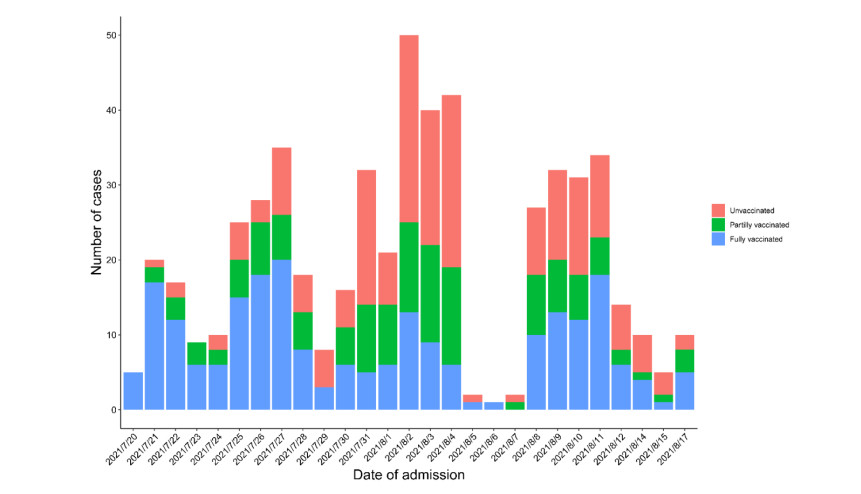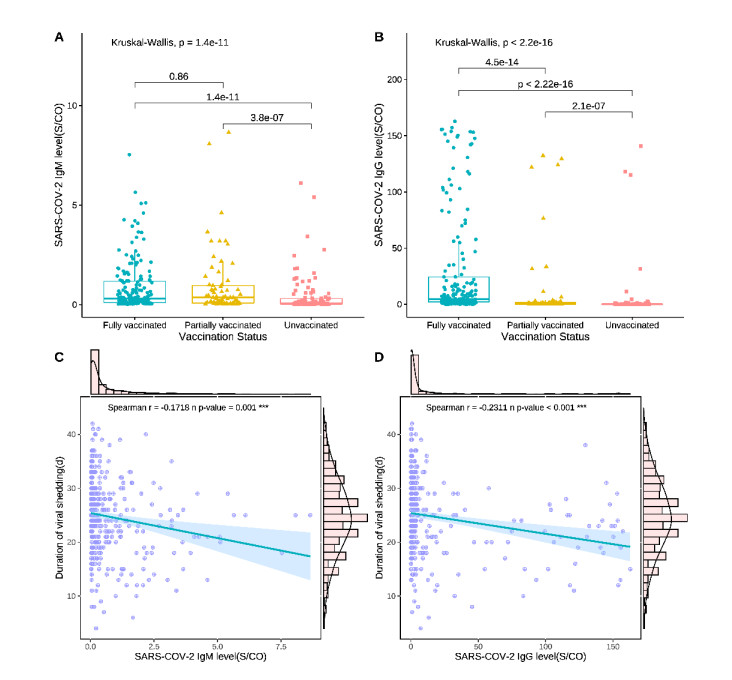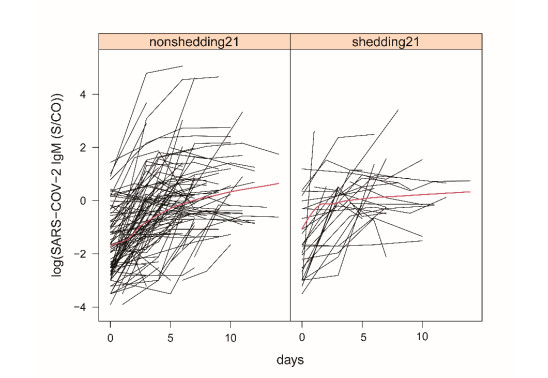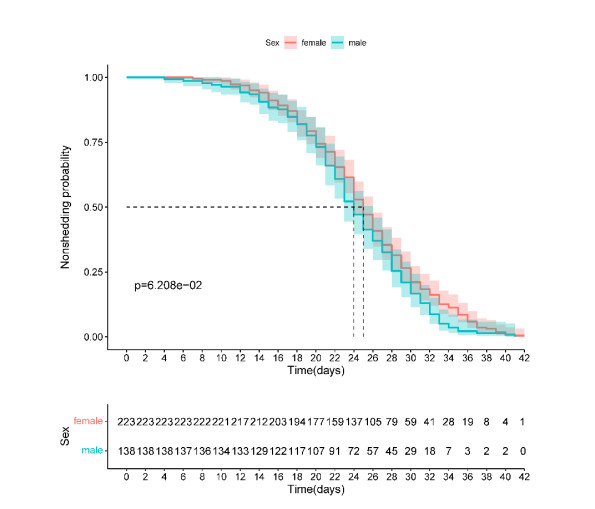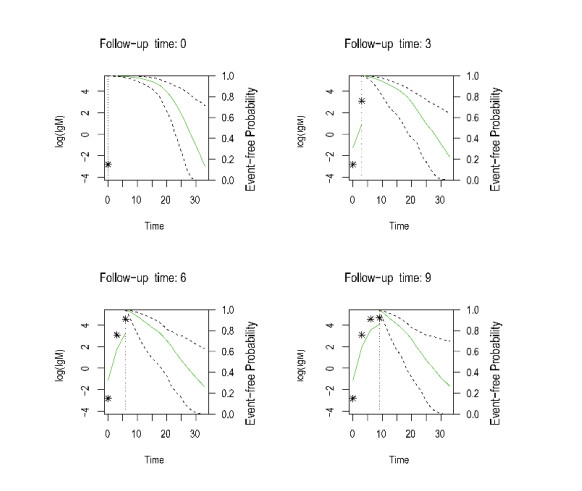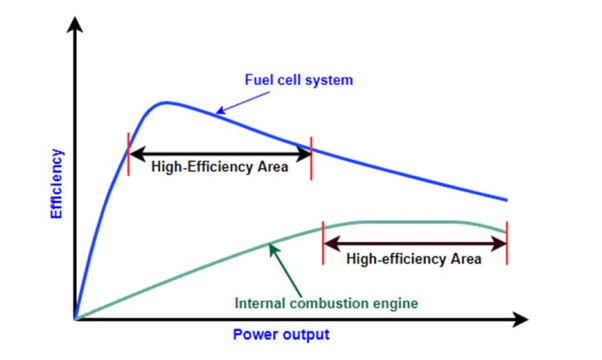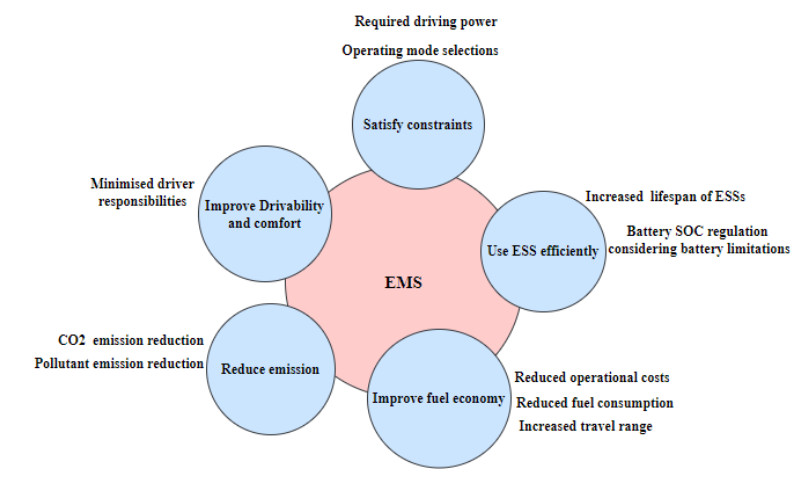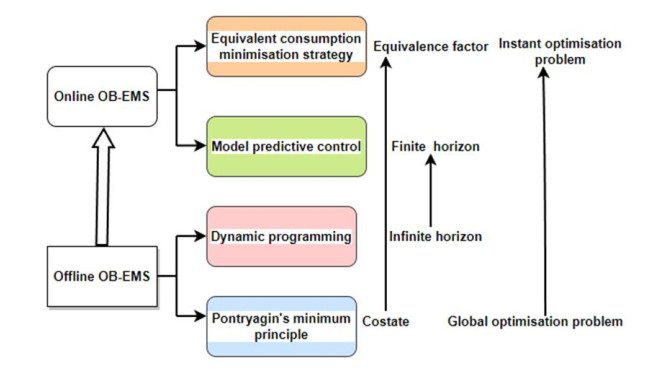|
[1]
|
Fletcher T (2017) Optimal energy management strategy for a fuel cell hybrid electric vehicle. Loughborough University. Available from: https://hdl.handle.net/2134/25567.
|
|
[2]
|
Erensoy SC (2018) Simulation and energy management strategy development for a fuel cell hybrid electric powertrain of a zero-emission boat. Tecnico Lisboa. Available from: https://fenix.tecnico.ulisboa.pt/downloadFile/563345090416864.
|
|
[3]
|
Bendjedia B, Alloui H, Rizoug N, et al. (2016) Sizing and energy management strategy for hybrid FC/Battery electric vehicle. IECON Proceedings (Industrial Electronics Conference), Florence, Italy, IEEE, 2111-2116. https://doi.org/10.1109/IECON.2016.7793271
|
|
[4]
|
Sorlei I-S, Bizon N, Thounthong P, et al. (2021) Fuel cell electric vehicles—A brief review of current topologies and energy management strategies. Energies 14: 2-27. https://doi.org/10.3390/en14010252 doi: 10.3390/en14010252

|
|
[5]
|
Carnevali MLS (2017) Modelling and control of PEM fuel cells. Universitat Politecnica de Catalunya. Available from: https://mat-web.upc.edu/people/carles.batlle/fitxers/thesis_MLSC.pdf.
|
|
[6]
|
Sulaiman N, Hannan MA, Mohamed A, et al. (2018) Optimization of energy management system for fuel-cell hybrid electric vehicles: Issues and recommendations. Appl Energy 228: 2061-2079. https://doi.org/10.1016/j.apenergy.2018.07.087 doi: 10.1016/j.apenergy.2018.07.087

|
|
[7]
|
Moher D, Liberati A, Tetzlaff J, et al. (2009) Preferred reporting items for systematic reviews and meta-analyses: The PRISMA statement. BMJ 339: 332-336. https://doi.org/10.1136/bmj.b2535 doi: 10.1136/bmj.b2535

|
|
[8]
|
Sulaiman N, Hannan MA, Mohamed A, et al. (2015) A review on energy management system for fuel cell hybrid electric vehicle: Issues and challenges. Renewable Sustainable Energy Rev 52: 802-814. http://dx.doi.org/10.1016/j.rser.2015.07.132 doi: 10.1016/j.rser.2015.07.132

|
|
[9]
|
Fonseca RN da (2013) Optimization of the sizing and energy management strategy for a hybrid fuel cell vehicle including fuel cell dynamics and durability constraints. Institut National des Sciences Appliquées de Lyon-INSA Lyon. Available from: http://theses.insa-lyon.fr/publication/2013ISAL0110/these.pdf.
|
|
[10]
|
Mokrani Z, Rekioua D, Mebarki N, et al. (2016) Energy management of Battery-PEM fuel cells hybrid energy storage system for electric vehicles. International Renewable and Sustainable Energy Conference (IRSEC), 1-70. https://doi.org/10.1109/IRSEC.2016.7984073
|
|
[11]
|
Odeim F, Roes J, Heinzel A (2015) Power management optimization of an experimental Fuel Cell/Battery/Supercapacitor hybrid system. Energies 8: 6302-6327. https://doi.org/10.3390/en8076302 doi: 10.3390/en8076302

|
|
[12]
|
Alloui H, Achour Y, Marouani K, et al. (2015) Energy management based on frequency decoupling: Experimental results with fuel cell-electric vehicle emulator. IEEE Veh Technol Conf 2015: 1-5. https://doi.org/10.1109/VTCSpring.2015.7145811 doi: 10.1109/VTCSpring.2015.7145811

|
|
[13]
|
Ates Y, Erdinc O, Uzunoglu M, et al. (2010) Energy management of an FC/UC hybrid vehicular power system using a combined neural network-wavelet transform based strategy. Int J Hydrogen Energy 35: 774-783. https://doi.org/10.1016/j.ijhydene.2009.11.021 doi: 10.1016/j.ijhydene.2009.11.021

|
|
[14]
|
Rousseau A, Sharer P, Ahluwalia R (2004) Energy storage requirements for fuel cell vehicles. 1-12. https://doi.org/10.4271/2004-01-1302
|
|
[15]
|
Vaz WS (2015) Energy management in electric vehicles: Development and validation of an optimal driving strategy. Missouri University of Science and Technology. Available from: https://scholarsmine.mst.edu/doctoral_dissertations/2422.
|
|
[16]
|
Tran DD, Vafaeipour M, El Baghdadi M, et al. (2020) Thorough State-of-the-Art analysis of electric and hybrid vehicle powertrains: Topologies and integrated energy management strategies. Renewable Sustainable Energy Rev 119: 2-30. https://doi.org/10.1016/j.rser.2019.109596 doi: 10.1016/j.rser.2019.109596

|
|
[17]
|
Yang C, Zha M, Wang W, et al. (2020) Efficient energy management strategy for hybrid electric vehicles/plug-in hybrid electric vehicles: Review and recent advances under intelligent transportation system. IET Intell Transp Syst 14: 702-711. https://doi.org/10.1049/iet-its.2019.0606 doi: 10.1049/iet-its.2019.0606

|
|
[18]
|
Zhang F, Hu X, Langari R, et al. (2019) Energy management strategies of connected HEVs and PHEVs: Recent progress and outlook. Prog Energy Combust Sci 73: 235-256. https://doi.org/10.1016/j.pecs.2019.04.002 doi: 10.1016/j.pecs.2019.04.002

|
|
[19]
|
Zhang Q, Li G (2019) A game theory energy management strategy for a fuel cell/battery hybrid energy storage system. Math Probl Eng 2019: 1-12. https://doi.org/10.1155/2019/7860214 doi: 10.1155/2019/7860214

|
|
[20]
|
Hu Y, Li W, Xu K, et al. (2018) Energy management strategy for a hybrid electric vehicle based on deep reinforcement learning. Appl Sci 8: 1-15. https://doi.org/10.3390/app8020187 doi: 10.3390/app8020187

|
|
[21]
|
Hu J, Jiang X, Jia M, et al. (2018) Energy management strategy for the hybrid energy storage system of pure electric vehicle considering traffic information. Appl Sci 8: 2-16. https://doi.org/10.3390/app8081266 doi: 10.3390/app8081266

|
|
[22]
|
Panchal S (2014) Impact of vehicle charge and discharge cycles on the thermal characteristics of lithium-ion batteries. University of Waterloo. Available from: http://hdl.handle.net/10012/8423.
|
|
[23]
|
Li P, Yan J, Tu Q, et al. (2018) A novel energy management strategy for series hybrid electric rescue vehicle. Math Probl Eng 2018: 1-14. https://doi.org/10.1155/2018/8450213 doi: 10.1155/2018/8450213

|
|
[24]
|
George SS (2018) A modular multi-level converter for energy management of hybrid storage system in electric vehicles. San Jose State University. https://doi.org/10.1109/ITEC.2018.8450237
|
|
[25]
|
Song K, Li F, Hu X, et al. (2018) Multi-Mode energy management strategy for fuel cell electric vehicles based on driving pattern identification using learning vector quantization neural network algorithm. J Power Sources 389: 230-239. https://doi.org/10.1016/j.jpowsour.2018.04.024 doi: 10.1016/j.jpowsour.2018.04.024

|
|
[26]
|
Hemi H, Ghouili J, Cheriti A (2013) A real time energy management for electrical vehicle using combination of rule-based and ECMS. IEEE Electrical Power and Energy Conference, EPEC, Halifax, Nova Scotia, Canada, IEEE, 2-7. https://doi.org/10.1109/EPEC.2013.6802927
|
|
[27]
|
Li Q, Su B, Pu Y, et al. (2019) A state machine control based on equivalent consumption minimization for fuel cell/ supercapacitor hybrid tramway. IEEE Trans Transp Electrif 5: 552-564. https://doi.org/10.1109/TTE.2019.2915689 doi: 10.1109/TTE.2019.2915689

|
|
[28]
|
Silva MA, De Melo HN, Trovao JP, et al. (2013) An integrated fuzzy logic energy management for a dual-source electric vehicle. IECON Proceedings (Industrial Electronics Conference), Vienna, Austria, IEEE, 4564-4569. https://doi.org/10.1109/IECON.2013.6699871
|
|
[29]
|
Li CY, Liu GP (2009) Optimal fuzzy power control and management of fuel cell/battery hybrid vehicles. J Power Sources 192: 525-533. https://doi.org/10.1016/j.jpowsour.2009.03.007 doi: 10.1016/j.jpowsour.2009.03.007

|
|
[30]
|
Ehsani M, Gao Y, Emadi A (2010) Modern Electric, Hybrid Electric, and Fuel Cell Vehicles, 3 Eds., New York: CRC Press, 421-470. https://doi.org/10.1201/9781420054002
|
|
[31]
|
Saeks R, Cox CJ, Neidhoefer J, et al. (2002) Adaptive control of a hybrid electric vehicle. IEEE Trans Intell Transp Syst 3: 213-233. https://doi.org/10.1109/TITS.2002.804750 doi: 10.1109/TITS.2002.804750

|
|
[32]
|
Mohebbi M, Charkhgard M, Farrokhi M (2005) Optimal neuro-fuzzy control of parallel hybrid electric vehicles. IEEE Vehicle Power and Propulsion Conference, VPPC, Chicago, USA, Researchgate, 252-256. https://doi.org/10.1109/VPPC.2005.1554566
|
|
[33]
|
Dazhi W, Jie Y, Qing Y, et al. (2007) Estimation and control of hybrid electric vehicle using artificial neural networks. IEEE Conference on Industrial Electronics and Applications, Harbin, China, 35-40. https://doi.org/10.1109/ICIEA.2007.4318365
|
|
[34]
|
Chen ZH, Masrur MA, Murphey YL (2008) Intelligent vehicle power management using machine learning and fuzzy logic. IEEE International Conference on Fuzzy Systems, Hong Kong, China., Researchgate, 2351-2358. https://doi.org/10.1109/FUZZY.2008.4630697
|
|
[35]
|
Hajimiri MH, Salmasi FR (2006) A fuzzy energy management strategy for series hybrid electric vehicle with predictive control and durability extension of the battery. IEEE Conference on Electric and Hybrid Vehicles, ICEHV, Pune, India, IEEE, 1-5. https://doi.org/10.1109/ICEHV.2006.352279
|
|
[36]
|
Gang S, Yuanwei J, Aidong X, et al. (2006) Study and simulation of based-fuzzy-logic parallel hybrid electric vehicles control strategy. International Conference on Intelligent Systems Design and Applications, Jinan, China, IEEE, Computer Society, 280-284. https://doi.org/10.1109/ISDA.2006.252
|
|
[37]
|
Wu J, Zhang C, Cui N (2012) Combustion and emission characteristics of wood pyrolysis oil-butanol blended fuels in a di diesel engine. Int J Automot Technol 13: 1159-1167. https://doi.org/10.1007/s12239-015-0092-4 doi: 10.1007/s12239-015-0092-4

|
|
[38]
|
Poursamad A, Montazeri M (2008) Design of genetic-fuzzy control strategy for parallel hybrid electric vehicles. Control Eng Pract 16: 861-873. https://doi.org/10.1016/j.conengprac.2007.10.003 doi: 10.1016/j.conengprac.2007.10.003

|
|
[39]
|
Böhme TJ, Benjamin F (2017) Hybrid systems, optimal control and hybrid vehicles. Cham, Switzerland, Springer Nature, 100-200. https://doi.org/10.1007/978-3-319-51317-1
|
|
[40]
|
Jeon B (2020) Energy management system in naval submarines. IEEE Transportation Electrification Conference & Expo (ITEC), 10-100. https://doi.org/10.1109/ITEC48692.2020.9161480
|
|
[41]
|
Herb F, Akula PR, Trivedi K, et al. (2013) Theoretical analysis of energy management strategies for fuel cell electric vehicle with respect to fuel cell and battery aging. World Electric Vehicle Symposium and Exhibition, EVS 27, Barcelona, Spain, EVS27, 1-9. https://doi.org/10.1109/EVS.2013.6915049
|
|
[42]
|
Sun D, Lin X, Qin D, et al. (2012) Power-Balancing instantaneous optimization energy management for a novel series-parallel hybrid electric bus. Chinese J Mech Eng (English Ed) 25: 1161-1170. https://doi.org/10.3901/CJME.2012.06.1161 doi: 10.3901/CJME.2012.06.1161

|
|
[43]
|
Tazelaar E, Veenhuizen B, Jagerman J, et al. (2013) Energy management strategies for fuel cell hybrid vehicles; an overview. International Battery, Hybrid and Fuel Cell Electric Vehicle Symposium, Barcelona, Spain, EVS27, 1-12. https://doi.org/10.1109/EVS.2013.6915039
|
|
[44]
|
Schouten NJ, Salman MA, Kheir NA (2002) Fuzzy logic control for parallel hybrid vehicles. IEEE Trans Control Syst Technol 10: 460-468. https://doi.org/10.1109/87.998036 doi: 10.1109/87.998036

|
|
[45]
|
Salmanx M, Schouten NJ, Naim AK (2000) Control strategies for parallel hybrid vehicles. Proceedings of the American Control Conference, Chicago, Illinois, 524-528. https://doi.org/10.1109/ACC.2000.878955
|
|
[46]
|
Lin CC, Peng H, Grizzle JW (2004) A stochastic control strategy for hybrid electric vehicles. Proceedings of the American Control Conference, Boston, Massachusetts, IEEE Xplore, 4710-4715. https://doi.org/10.23919/ACC.2004.1384056.
|
|
[47]
|
Panday A, Bansal HO (2016) Energy management strategy for hybrid electric vehicles using genetic algorithm. J Renewable Sustainable Energy, 8. https://doi.org/10.1063/1.4938552
|
|
[48]
|
Lorf CF (2014) Optimum battery capacity for electric vehicles with particular focus on battery degradation. Imperial College London, 10-105. https://doi.org/10.25560/13800
|
|
[49]
|
Mokrani Z, Rekioua D, Rekioua T (2014) Modeling, control and power management of hybrid photovoltaic fuel cells with battery bank supplying electric vehicle. Int J Hydrogen Energy 39: 15178-15187. https://doi.org/10.1016/j.ijhydene.2014.03.215 doi: 10.1016/j.ijhydene.2014.03.215

|
|
[50]
|
Li Q, Yang H, Han Y, et al. (2016) A state machine strategy based on droop control for an energy management system of pemfc-battery-supercapacitor hybrid tramway. Int J Hydrogen Energy 41: 16148-16159. https://doi.org/10.1016/j.ijhydene.2016.04.254 doi: 10.1016/j.ijhydene.2016.04.254

|
|
[51]
|
Chin HH, Jafari AA (2011) A selection algorithm for power controller unit of hybrid vehicles. International IEEE Conference on Intelligent Transportation Systems, ITSC, Washington, DC, USA, IEEE, 324-328. https://doi.org/10.1109/ITSC.2011.6082910
|
|
[52]
|
Zou Y, Liu T, Liu D, et al. (2016) Reinforcement learning-based real-time energy management for a hybrid tracked vehicle. Appl Energy 171: 372-382. https://doi.org/10.1016/j.apenergy.2016.03.082 doi: 10.1016/j.apenergy.2016.03.082

|
|
[53]
|
Venditti M (2016) Analysis of the performance of different machine learning techniques for the definition of rule-based control strategies in a parallel HEV. Energy Procedia 101: 685-692. https://doi.org/10.1016/j.egypro.2016.11.087 doi: 10.1016/j.egypro.2016.11.087

|
|
[54]
|
Murphey YL, Park J, Chen Z, et al. (2012) Intelligent hybrid vehicle power control Part I: Machine learning of optimal vehicle power. IEEE Trans Veh Technol 61: 3519-3530. https://doi.org/10.1109/TVT.2012.2206064 doi: 10.1109/TVT.2012.2206064

|
|
[55]
|
Marina Martinez C, Heucke M, Wang FY, et al. (2018) Driving style recognition for intelligent vehicle control and advanced driver assistance: A survey. IEEE Trans Intell Transp Syst 19: 666-676. https://doi.org/10.1109/TITS.2017.2706978 doi: 10.1109/TITS.2017.2706978

|
|
[56]
|
Li W, Xu G, Xu Y (2012) Online learning control for hybrid electric vehicle. Chinese J Mech Eng (English Ed) 25: 98-106. https://doi.org/10.3901/CJME.2012.01.098 doi: 10.3901/CJME.2012.01.098

|
|
[57]
|
Hu Y, Li W, Xu H, et al. (2015) An online learning control strategy for hybrid electric vehicle based on fuzzy q-learning. Energies 8: 11167-11186. https://doi.org/10.3390/en81011167 doi: 10.3390/en81011167

|
|
[58]
|
Zhang W, Li J, Xu L, et al. (2017) Optimization for a fuel cell/battery/capacity tram with equivalent consumption minimization strategy. Energy Convers Manag 134: 59-69. https://doi.org/10.1016/j.enconman.2016.11.007 doi: 10.1016/j.enconman.2016.11.007

|
|
[59]
|
Qi X, Wu G, Boriboonsomsin K, et al. (2016) Data-Driven reinforcement learning-based real-time energy management system for plug-in hybrid electric vehicles. Transp Res Rec, 1-8. https://doi.org/10.3141%2F2572-01
|
|
[60]
|
Li Y, He H, Peng J, et al. (2017) Power management for a plug-in hybrid electric vehicle based on reinforcement learning with continuous state and action spaces. Energy Procedia 142: 2270-2275. https://doi.org/10.1016/j.egypro.2017.12.629 doi: 10.1016/j.egypro.2017.12.629

|
|
[61]
|
Lin X, Bogdan P, Chang N, et al. (2015) Machine learning-based energy management in a hybrid electric vehicle to minimize total operating cost. IEEE/ACM International Conference on Computer-Aided Design, ICCAD, IEEE, 627-634. https://doi.org/10.1109/ICCAD.2015.7372628
|
|
[62]
|
Gao J, Li M, Hu Y, et al. (2019) Challenges and Developments of automotive fuel cell hybrid power system and control. Sci China Inf Sci 62: 2-26. https://doi.org/10.1007/s11432-018-9690-y doi: 10.1007/s11432-018-9690-y

|
|
[63]
|
Yue M (2019) Contribution of developing a prognostics-based energy management strategy for fuel cell hybrid system—application to a fuel cell/battery hybrid electric vehicle. Université Bourgogne Franche-Comté. Available from: https://tel.archives-ouvertes.fr/tel-02744268.
|
|
[64]
|
Sinoquet D, Rousseau G, Milhau Y (2011) Design optimization and optimal control for hybrid vehicles. Optim Eng 12: 199-213. https://doi.org/10.1007/s11081-009-9100-8 doi: 10.1007/s11081-009-9100-8

|
|
[65]
|
Paganelli G, Delprat S, Guerra TM, et al. (2002) Equivalent consumption minimization strategy for parallel hybrid powertrains. Vehicular Technology Conference, Dresden, Germany, IEEE, 2076-2081. https://doi.org/10.1109/VTC.2002.1002989
|
|
[66]
|
Zheng Q, Yuan H, Wu J, et al. (2018) Equivalent consumption minimization strategy based on dynamic programming for plug-in hybrid electric vehicle. IFAC-PapersOnLine 51: 612-617. https://doi.org/10.1016/j.ifacol.2018.10.146 doi: 10.1016/j.ifacol.2018.10.146

|
|
[67]
|
Rodatz P, Paganelli G, Sciarretta A, et al. (2005) Optimal power management of an experimental fuel cell/supercapacitor- powered hybrid vehicle. Control Eng Pract 13: 41-53. https://doi.org/10.1016/j.conengprac.2003.12.016 doi: 10.1016/j.conengprac.2003.12.016

|
|
[68]
|
Banvait H, Member S, Hu J (2013) Energy management control of plug-in hybrid electric vehicle using hybrid dynamical systems set of discrete inputs. IEEE Trans Intell Transp Syst XX: 1-13. https://doi.org/10.1109/IEVC.2012.6183215
|
|
[69]
|
Han J, Charpentier JF, Tang T (2014) An Energy management system of a fuel cell/battery hybrid boat. Energies 7: 2799-2820. https://doi.org/10.3390/en7052799 doi: 10.3390/en7052799

|
|
[70]
|
Xu L, Mueller CD, Li J, et al. (2015) Multi-objective component sizing based on optimal energy management strategy of fuel cell electric vehicles. Appl Energy 157: 664-674. https://doi.org/10.1016/j.apenergy.2015.02.017 doi: 10.1016/j.apenergy.2015.02.017

|
|
[71]
|
Johannesson L, Åsbogård M, Egardt B (2007) Assessing the potential of predictive control for hybrid vehicle powertrains using stochastic dynamic programming. IEEE Trans Intell Transp Syst 8: 71-83. https://doi.org/10.1109/TITS.2006.884887 doi: 10.1109/TITS.2006.884887

|
|
[72]
|
Chen Z, Mi CC (2009) An adaptive online energy management controller for power-split HEV based on dynamic programming and fuzzy logic. 5th IEEE Vehicle Power and Propulsion Conference, VPPC, Michigan, IEEE, 335-339. https://doi.org/10.1109/VPPC.2009.5289831
|
|
[73]
|
Williamson SS (2013) Energy management strategies for electric and plug-in hybrid electric vehicles, 1 Eds., London: Springer, 50-150. https://doi.org/10.1007/978-1-4614-7711-2
|
|
[74]
|
Dextreit C, Kolmanovsky IV (2014) Game theory controller for hybrid electric vehicles. IEEE Trans Control Syst Technol 22: 652-663. https://doi.org/10.1109/TCST.2013.2254597 doi: 10.1109/TCST.2013.2254597

|
|
[75]
|
Smithson Bell JK (2016) Design and control of a hydrogen fuel cell vehicle. University of California IRVINE. Available from: https://escholarship.org/uc/item/5jg115q0.
|
|
[76]
|
Gielniak MJ, Shen ZJ (2004) Power management strategy based on game theory for fuel cell hybrid electric vehicles. IEEE Vehicular Technology Conference, Los Angeles, CA, USA., IEEE, 4422-4426. https://doi.org/10.1109/VETECF.2004.1404915
|
|
[77]
|
Kennedy J, Eberhart R (1995) Particle swarm optimization. International Conference on Neural Networks, Perth, Australia, 1942-1948. https://doi.org/10.1109/ICNN.1995.488968
|
|
[78]
|
Wang Z, Huang B, Li W, et al. (2006) Particle swarm optimization for operational parameters of series hybrid electric vehicle. IEEE International Conference on Robotics and Biomimetics, ROBIO, Kunming, China, IEEE, 682-688. https://doi.org/10.1109/ROBIO.2006.340289
|
|
[79]
|
Lin X, Banvait H, Anwar S, et al. (2010) Optimal energy management for a plug-in hybrid electric vehicle: Real-time controller. American Control Conference, ACC, Baltimore, MD, USA, 5037-5042. https://doi.org/10.1109/ACC.2009.5160242
|
|
[80]
|
Hegazy O, Van Mierlo J (2010) Particle swarm optimization for optimal powertrain component sizing and design of fuel cell hybrid electric vehicle. International Conference on Optimisation of Electrical and Electronic Equipment, OPTIM, 601-609. https://doi.org/10.1109/OPTIM.2010.5510447
|
|
[81]
|
Desai C, Williamson SS (2010) Particle swarm optimization for efficient selection of hybrid electric vehicle design parameters. IEEE Energy Conversion Congress and Exposition, ECCE, IEEE, 1623-1628. https://doi.org/10.1109/ECCE.2010.5618098
|
|
[82]
|
Piccolo A, Ippolito L, Zo Galdi V, et al. (2001) Optimisation of energy flow management in hybrid electric vehicles via genetic algorithms. IEEE/ASME International Conference on Advanced Intelligent Mechatronics, AIM, Como, Italy, 434-439. https://doi.org/10.1109/AIM.2001.936493
|
|
[83]
|
Chen Z, Mi CC, Xiong R, et al. (2014) Energy management of a power-split plug-in hybrid electric vehicle based on genetic algorithm and quadratic programming. J Power Sources 248: 416-426. https://doi.org/10.1016/j.jpowsour.2013.09.085 doi: 10.1016/j.jpowsour.2013.09.085

|
|
[84]
|
Desai C, Williamson SS (2009) Optimal design of a parallel hybrid electric vehicle using multi-objective genetic algorithms. IEEE Vehicle Power and Propulsion Conference, VPPC, IEEE, 871-876. https://doi.org/10.1109/VPPC.2009.5289754
|
|
[85]
|
Kirkpatrick S, Gelatt CD, Vecchi MP (1983) Optimization by simulated annealing. Science 220: 671-680. https://doi.org/10.1126/science.220.4598.671 doi: 10.1126/science.220.4598.671

|
|
[86]
|
Wang Z, Huang B, Xu Y, et al. (2007) Optimization of series hybrid electric vehicle operational parameters by simulated annealing algorithm. IEEE International Conference on Control and Automation, ICCA, Guangzhou, China, 1536-1541. https://doi.org/10.1109/ICCA.2007.4376618
|
|
[87]
|
Hui S (2010) Multi-Objective optimization for hydraulic hybrid vehicle based on adaptive simulated annealing genetic algorithm. Eng Appl Artif Intell 23: 27-33. https://doi.org/10.1016/j.engappai.2009.09.005 doi: 10.1016/j.engappai.2009.09.005

|
|
[88]
|
Sharma A (2015) Comparative study of researches published in the past decade on short term load forecasting. Int J Recent Technol Mech Electr Eng 2: 25-31. Available from: https://www.semanticscholar.org/paper/Comparative-Study-of-Researches-Published-in-the-on-Sharma/c96431c0ff9a111a340c70a2a7b60bb9456ee421.
|
|
[89]
|
Chen Z, Mi CC, Xia B, et al. (2014) Energy management of power-split plug-in hybrid electric vehicles based on simulated annealing and Pontryagin's minimum principle. J Power Sources 272: 160-168. https://doi.org/10.1016/j.jpowsour.2014.08.057 doi: 10.1016/j.jpowsour.2014.08.057

|
|
[90]
|
Beck R, Bollig A, Abel D (2006) Comparison of two real-time predictive strategies for the optimal energy management of a hybrid electric vehicle. E-COSM—Rencontres Scientifiques de l'IFP, Rueil-Malmaison, France, IFP—E-COSM, 1-8. Available from: https://citeseerx.ist.psu.edu/viewdoc/download?doi=10.1.1.601.7319&rep=rep1&type=pdf.
|
|
[91]
|
Koot M, Kessels JTBA, Jager B de, et al. (2015) Energy management strategies for vehicular electric power systems. IEEE Trans Veh Technol 54: 771-782. https://doi.org/10.1109/TVT.2005.847211 doi: 10.1109/TVT.2005.847211

|
|
[92]
|
Egardt B, Murgovski N, Pourabdollah M, et al. (2014) Electromobility studies based on convex optimization. IEEE Control Syst Mag 34: 32-49. https://doi.org/10.1109/MCS.2013.2295709 doi: 10.1109/MCS.2013.2295709

|
|
[93]
|
Hu X, Murgovski N, Johannesson L, et al. (2013) Energy efficiency analysis of a series plug-in hybrid electric bus with different energy management strategies and battery sizes. Appl Energy 111: 1001-1009. https://doi.org/10.1016/j.apenergy.2013.06.056 doi: 10.1016/j.apenergy.2013.06.056

|
|
[94]
|
Zhang M, Yang Y, Mi CC (2012) Analytical approach for the power management of blended-mode plug-in hybrid electric vehicles. IEEE Trans Veh Technol 61: 1554-1566. https://doi.org/10.1109/TVT.2012.2187318 doi: 10.1109/TVT.2012.2187318

|
|
[95]
|
Hu X, Martinez CM, Egardt B, et al. (2015) Multi-objective optimal sizing and control of fuel cell systems for hybrid vehicle applications. European Control Conference, ECC, Linz, Austria, EUCA, 2559-2564. https://doi.org/10.1109/ECC.2015.7330923
|
|
[96]
|
Hu X, Johannesson L, Murgovski N, et al. (2015) Longevity-conscious dimensioning and power management of the hybrid energy storage system in a fuel cell hybrid electric bus. Appl Energy 137: 913-924. https://doi.org/10.1016/j.apenergy.2014.05.013 doi: 10.1016/j.apenergy.2014.05.013

|
|
[97]
|
Lin CC, Peng H, Grizzle JW, et al. (2003) Power management strategy for a parallel hybrid electric truck. IEEE Trans Control Syst Technol 11: 839-849. https://doi.org/10.1109/TCST.2003.815606 doi: 10.1109/TCST.2003.815606

|
|
[98]
|
Gong Q, Li Y, Peng ZR (2007) Trip based power management of plug-in hybrid electric vehicle with two-scale dynamic programming. IEEE Vehicle Power and Propulsion Conference, Arlington, Texas, IEEE, 12-19. https://doi.org/10.1109/VPPC.2007.4544089
|
|
[99]
|
Sundström O, Stefanopoulou A (2006) Optimal power split in fuel cell hHybrid electric vehicle with different battery sizes, drive cycles, and objectives. IEEE International Conference on Control Applications, Munich, 1681-1688. https://doi.org/10.1109/CCA.2006.286107
|
|
[100]
|
Santucci A, Sorniotti A, Lekakou C (2014) Power split strategies for hybrid energy storage systems for vehicular applications. J Power Sources 258: 395-407. https://doi.org/10.1016/j.jpowsour.2014.01.118 doi: 10.1016/j.jpowsour.2014.01.118

|
|
[101]
|
Panday A, Bansal HO (2014) A review of optimal energy management strategies for hybrid electric vehicle. Int J Veh Technol 2014: 1-18. https://doi.org/10.1007/s12239-015-0092-4 doi: 10.1007/s12239-015-0092-4

|
|
[102]
|
Lee SH, Kim TY (2015) Combustion and emission characteristics of wood pyrolysis oil-butanol blended fuels in a di diesel engine. Int J Automot Technol 16: 903-912. https://doi.org/10.1007/s12239-015-0092-4 doi: 10.1007/s12239-015-0092-4

|
|
[103]
|
Sebastien D, Marie GT, Gin P, et al. (2001) Control strategy optimization for an hybrid parallel powertrain. Proceedings of the American Control Conference, Arlington, VA, 1315-1320. https://doi.org/10.1109/ACC.2001.945905
|
|
[104]
|
Serrao L, Rizzoni G (2008) Optimal control of power split for a hybrid electric refuse vehicle. Proceedings of the American Control Conference, Seattle, Washington, 4498-4503. https://doi.org/10.1109/ACC.2008.4587204
|
|
[105]
|
Bernard J, Delprat S, Buechi F, et al. (2006) Global optimisation in the power management of a fuel cell hybrid vehicle (FCHV). IEEE Veh Power Propuls Conf VPPC. 1-6. https://doi.org/10.1109/VPPC.2006.364289
|
|
[106]
|
Hemi H, Ghouili J, Cheriti A (2015) Combination of Markov chain and optimal control solved by Pontryagin's minimum principle for a fuel cell/supercapacitor vehicle. Energy Convers Manag 91: 387-393. https://doi.org/10.1016/j.enconman.2014.12.035 doi: 10.1016/j.enconman.2014.12.035

|
|
[107]
|
Delprat S, Lauber J, Guerra TM, et al. (2004) Control of a parallel hybrid powertrain: Optimal control. IEEE Trans Veh Technol 53: 872-881. https://doi.org/10.1109/TVT.2004.827161 doi: 10.1109/TVT.2004.827161

|
|
[108]
|
Pham TH, Kessels JTBA, Van Den Bosch PPJ, et al. (2013) On-line energy and battery thermal management for hybrid electric heavy-duty truck. Proceedings of the American Control Conference, Washington, DC, USA, IEEE, 710-715. https://doi.org/10.1109/ACC.2013.6579919
|
|
[109]
|
Kessels JTBA, Koot MWT, Bosch PPJ van den, et al. (2008) Online energy management for hybrid electric vehicles. IEEE Trans Veh Technol 57: 21-36. https://doi.org/10.1109/TVT.2008.919988 doi: 10.1109/TVT.2008.919988

|
|
[110]
|
Yu H, Kuang M, McGee R (2014) Trip-oriented energy management control strategy for plug-in hybrid electric vehicles. IEEE Transactions on Control Systems Technology, Orlando, FL, USA, IEEE, 1323-1336. https://doi.org/10.1109/TCST.2013.2278684
|
|
[111]
|
Schori M, Boehme TJ, Jeinsch T, et al. (2015) A robust predictive energy management for plug-in hybrid vehicles based on hybrid optimal control theory. Proceedings of the American Control Conference, American Automatic Control Council, 2278-2283. https://doi.org/10.1109/ACC.2015.7171072
|
|
[112]
|
Hou C, Ouyang M, Xu L, et al. (2014) Approximate Pontryagin's minimum principle applied to the energy management of plug-in hybrid electric vehicles. Appl Energy 115: 174-189. https://doi.org/10.1016/j.apenergy.2013.11.002 doi: 10.1016/j.apenergy.2013.11.002

|
|
[113]
|
Weyers C, Bocklisch T (2018) Simulation-Based investigation of energy management concepts for fuel cell—battery—hybrid energy systems in mobile mobile applications. Energy Procedia 155: 295-308. https://doi.org/10.1016/j.egypro.2018.11.048 doi: 10.1016/j.egypro.2018.11.048

|
|
[114]
|
Robledo CB, Oldenbroek V, Abbruzzese F, et al. (2018) Integrating a hydrogen fuel cell electric vehicle with vehicle-to-grid technology, photovoltaic power and a residential building. Appl Energy 215: 615-629. https://doi.org/10.1016/j.apenergy.2018.02.038 doi: 10.1016/j.apenergy.2018.02.038

|
|
[115]
|
Elbert P, Nuesch T, Ritter A, et al. (2014) Engine On/Off control for the energy management of a serial hybrid electric bus via convex optimization. IEEE Trans Veh Technol 63: 3549-3559. https://doi.org/10.1109/TVT.2014.2304137 doi: 10.1109/TVT.2014.2304137

|
|
[116]
|
Opila DF, Wang X, McGee R, et al. (2014) Real-world robustness for hybrid vehicle optimal energy management strategies incorporating drivability metrics. J Dyn Syst Meas Control Trans ASME 136. https://doi.org/10.1115/1.4027680
|
|
[117]
|
Fister I, Yang XS, Brest J, et al. (2013) A brief review of nature-inspired algorithms for optimization. Elektroteh Vestnik/Electrotechnical Rev 80: 116-122. Available from: https://www.researchgate.net/publication/249645112_A_Brief_Review_of_Nature-Inspired_Algorithms_for_Optimization.
|
|
[118]
|
Wu W, Chuang B-N, Hwang J-J, et al. (2019) Techno-Economic evaluation of a hybrid fuel cell vehicle with on-board meoh-to-h2 processor. Appl Energy 238: 401-412. https://doi.org/10.1016/j.apenergy.2019.01.089 doi: 10.1016/j.apenergy.2019.01.089

|
|
[119]
|
Corral-Vega PJ, García-Triviño P, Fernández-Ramírez LM (2019) Design, modelling, control and techno-economic evaluation of a fuel cell/supercapacitors powered container crane. Energy 186: 1-13. https://doi.org/10.1016/j.energy.2019.115863 doi: 10.1016/j.energy.2019.115863

|
|
[120]
|
Hosseini SE, Butler B (2020) An overview of development and challenges in hydrogen powered vehicles. Int J Green Energy 17: 13-37. https://doi.org/10.1080/15435075.2019.1685999 doi: 10.1080/15435075.2019.1685999

|
|
[121]
|
Waschl H, Kolmanovsky I, Willems F (2019) Control strategies for advanced driver assitance systems and autonomous driving functions, 476 Eds., New York: Springer Nature, 50-150. https://doi.org/10.1007/978-3-319-91569-2
|
|
[122]
|
Waschl H, Kolmanovsky I, Steinbuch M, et al. (2014) Optimization and optimal control in automotive systems, 455 Eds., New York: Springer, 41-100. Available from: http://www.springer.com/series/642.
|
|
[123]
|
Amini MR, Gong X, Feng Y, et al. (2019) Sequential optimization of speed, thermal load, and power split in connected HEVs. American Control Conference, 4614-4620. https://doi.org/10.23919/ACC.2019.8815158
|
|
[124]
|
van Reeven V, Hofman T (2019) Multi-Level energy management for hybrid electric vehicles—Part I. Vehicles 1: 3-40. https://doi.org/10.3390/vehicles1010002 doi: 10.3390/vehicles1010002

|
|
[125]
|
Zhang L, Liang W, Zheng X (2018) Eco-Driving for public transit in cyber-physical systems using v2i communication. Int J Intell Transp Syst Res 16: 79-89. https://doi.org/10.1007/s13177-017-0139-1 doi: 10.1007/s13177-017-0139-1

|
|
[126]
|
Xie S, Hu X, Liu T, et al. (2019) Predictive vehicle-following power management for plug-in hybrid electric vehicles. Energy 166: 701-714. https://doi.org/10.1016/j.energy.2018.10.129 doi: 10.1016/j.energy.2018.10.129

|
|
[127]
|
Ma G, Ghasemi M, Song X (2018) Integrated powertrain energy management and vehicle coordination for multiple connected hybrid electric vehicles. IEEE Trans Veh Technol 67: 2893-2899. https://doi.org/10.1109/TVT.2017.2780268 doi: 10.1109/TVT.2017.2780268

|
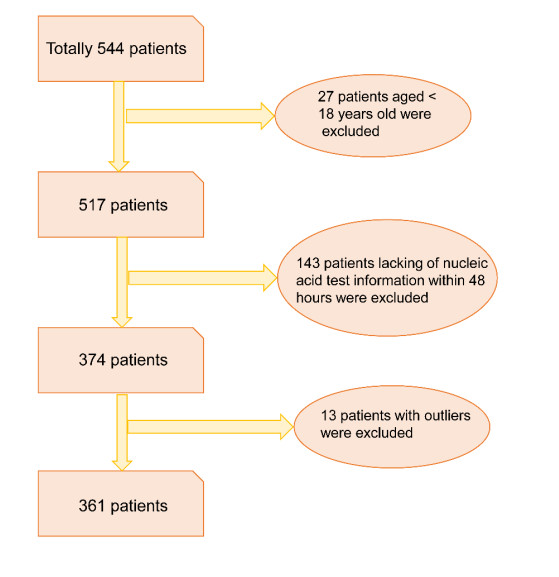









 DownLoad:
DownLoad:
